Antoni Gaudí highlighted buildings, influences and style

Born in 1852 in Riudoms (Spain) † 1926
Architectural style and influences of Antoni Gaudí
Antoni Gaudí, the renowned Catalan architect, is known for his distinctive and highly original architectural style that defies categorization. His work is often associated with the Catalan Modernisme movement but transcends any single architectural style. Here are some key characteristics of Antoni Gaudí's architectural style:
Modernisme (Catalan Art Nouveau)
Gaudí's work is deeply rooted in the Catalan Modernisme movement, which was a response to the broader Art Nouveau movement in Europe. This style emphasized organic forms, curved lines, and ornate details inspired by nature. Gaudí's designs often feature intricate floral motifs, sinuous curves, and imaginative use of color and texture.
Organic Forms and Natural Inspiration
Nature was Gaudí's greatest muse, and his designs often emulate organic forms found in the natural world. He drew inspiration from the shapes of plants, animals, and even geological formations. This can be seen in the undulating shapes, irregular curves, and biomimetic details found in his buildings.
Innovative Structural Techniques
Gaudí was a visionary architect who pushed the boundaries of engineering and construction. He developed innovative structural techniques that allowed for the creation of his iconic buildings. One of his most famous innovations is the "trencadís" technique, using broken ceramic tiles to create colorful mosaics that adorn many of his facades.
Parabolic Arch and Hyperboloid Structures
Gaudí's use of parabolic arches and hyperboloid structures is another hallmark of his style. These shapes allowed him to create buildings with exceptional strength and stability while also achieving unique and unconventional forms. Examples include the soaring columns of the Sagrada Familia and the curving walls of Casa Batlló.
Symbolism and Mysticism
Gaudí imbued his buildings with rich symbolism and spiritual meaning. He was deeply religious, and many of his designs incorporate Christian iconography and themes. The Sagrada Familia, for example, is filled with symbolic elements representing the life of Christ and the teachings of the Catholic Church.
Color and Materiality
Gaudí had a keen sense of color and used a vibrant palette in his designs. He often employed brightly colored tiles, stained glass, and ceramic elements to create a kaleidoscope of hues that change with the light. His use of materials was equally eclectic, including stone, brick, iron, and glass, often combined in unexpected ways.
Integration of Architecture and Nature
Gaudí believed in creating architecture that harmonized with its natural surroundings. He designed buildings with gardens, courtyards, and terraces that blend seamlessly with the landscape. This integration of architecture and nature can be seen in the organic flow of spaces and the incorporation of elements such as water features and lush vegetation.
Unfinished Works
One of the most striking aspects of Gaudí's legacy is the Sagrada Familia, his magnum opus that remains unfinished to this day. Construction began in 1882, and Gaudí dedicated the latter part of his life entirely to the project. Even after his death in 1926, work on the Sagrada Familia continues, with completion projected for the 2020s.
Iconic Works
Some of Antoni Gaudí's most famous works include the Sagrada Familia, an awe-inspiring basilica that is a UNESCO World Heritage Site; Casa Batlló, a fantastical residential building known for its undulating facade and colorful tiles; Park Güell, a whimsical public park filled with Gaudí's playful designs; and Casa Milà (La Pedrera), a striking apartment building with a sculptural, wave-like facade.
Antoni Gaudí's architectural style is a unique and visionary fusion of Catalan Modernisme, organic forms, innovative structures, symbolism, and a deep connection to nature. His buildings are not just structures but works of art, expressing his profound creativity, spirituality, and love for the natural world. Gaudí's legacy continues to captivate and inspire people from around the world, making him one of the most celebrated architects in history.
Highlighted buildings of Antoni Gaudí:
-
Casa Botines (León)
-
Colegio de las Teresianas (Barcelona)
-
Celler Güell (Barcelona)
-
Cripta Gaudi (Barcelona)
-
Palau Güell (Barcelona)
-
Torre Bellesguard (Barcelona)
-
Casa Vicenc (Barcelona)
-
Chalet refugio de Catllaràs (La Pobla de Lillet)
-
Jardín de Can Artigas (La Pobla de Lillet)
-
El Capricho (Comillas)
-
Casa Batlló (Barcelona)
Casa Batlló, one of Barcelona's most famous landmarks, is an architectural masterpiece designed by the renowned Catalan architect Antoni Gaudí. Located on the Passeig de Gràcia, this building is a prime example of Gaudí's unique style and innovative approach to architecture. Here are some key details about Casa Batlló:
Architectural Style
Casa Batlló is a prime example of Modernisme, a Catalan version of Art Nouveau, which was a popular architectural style in Barcelona at the...

-
Palacio Episcopal de Astorga (Astorga)
The Episcopal Palace of Astorga, located in the town of Astorga in the province of León, Spain, is a stunning example of Modernist architecture. Designed by the renowned Catalan architect Antoni Gaudí, the palace is a unique and striking building that stands out amidst the historic surroundings of Astorga. Here are some key details about the architecture of the Episcopal Palace of Astorga:
Architectural Style
The Episcopal Palace of Astorga showcases the distinctive style of Antoni...

-
La Sagrada Família (Barcelona)
-
La Pedrera - Casa Milà (Barcelona)
La Pedrera, also known as Casa Milà, stands as an icon of Barcelona's architectural landscape and a masterpiece of Antoni Gaudí's genius. This extraordinary building, completed in 1912, is a UNESCO World Heritage Site and a symbol of the city's Modernisme movement. Here's a comprehensive look at La Pedrera, its history, architecture, and significance:
History and Context
Commissioned by Pere Milà i Camps and his wife, Roser Segimon i Artells, La Pedrera was intended to be a...

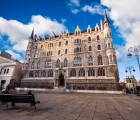



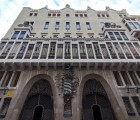
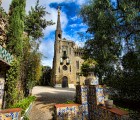
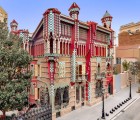


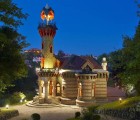
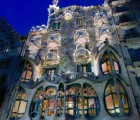
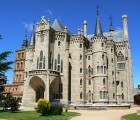
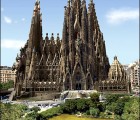
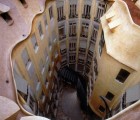
 Santiago Calatrava
Santiago Calatrava  Ban Shigeru
Ban Shigeru  Benedetta Tagliabue
Benedetta Tagliabue  César Pelli
César Pelli  Frank Gehry
Frank Gehry  Gustave Eiffel
Gustave Eiffel 